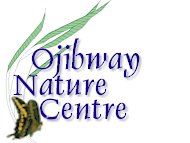
LINKS
Main Menu
Site Map & Links
Insects
EXTERNAL LINKS
Two excellent sites for more information:
Lady Beetle Site by Canadian Nature Federation
Multicolored Asian Lady Beetle FAQ
The increase in lady beetle numbers in 2001 coincided with the introduction of the soybean aphid. This aphid was accidentally introduced from Asia in June 2001 and quickly infested soybean crops in Ontario. The aphids in turn were readily eaten by lady beetle larvae.
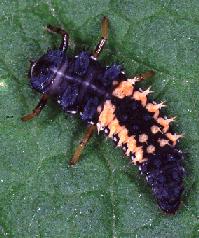
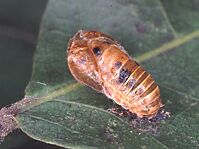
The bright colours of lady beetles are a warning to others. When annoyed, lady beetles exude toxic blood from their leg joints which repels most predators. Most lady beetles are avoided by insect eating birds and other potential predators.
Other insects that use buildings for overwintering sites include the Boxelder Bug and Western Conifer Seed Bug. The former can sometimes be found in large masses on the sides of buildings or porches as winter approaches. See the Bugs page for more information.
Lady Beetles (Coccinellidae)

Many thousands of Multicoloured Asian Lady Beetles, Harmonia axyridis, were reported in Windsor and LaSalle during October 2000 and again in October 2001. Swarms of the brightly coloured beetles landed on the sides of homes and disappeared into siding cracks. This introduced beetle was first found in Ontario in 1994 but is now one of the most commonly seen "ladybugs" in our region. This species which is also called the Southern Lady Beetle has been spreading rapidly since its introduction into the United States. In September 2001 another introduced species, the Seven-spotted Lady Beetle, Coccinella septempunctata, was also reported in large numbers. Other species of lady beetles are also known to aggregate in sheltered spots where they hibernate for the winter. Homeowners should not be concerned as the beetles will disperse on their own next spring.
Over 100 years ago the citris orchards of California were saved from an infestation of scale insects by the importation of an Australian lady beetle. Since that time many species of lady beetles have been introduced into North America for the control of aphids and other insect pests. Unfortunately some of our native species have declined with the increase of these exotic species. The three most common introduced species in Windsor are Multicoloured Asian, Seven-spotted and Russian Wheat-aphid Lady beetles.
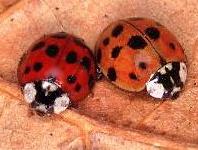
Multicoloured Asian (Southern) Lady Beetle, Harmonia axyridis
(a variable species, length 6-7 mm.) These lady beetles will sometimes nip when handled.
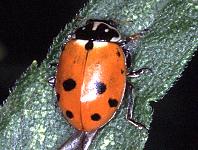
Russian Wheat-aphid Lady Beetle, Hippodamia variagata
(a small species, length 4 mm.)

Seven-spotted Lady Beetle, Coccinella septempunctata
(a large species, length 8 mm.). Most of our folklore on ladybugs is derived from Europe where this species originates. It became established in Ontario about twenty years ago.
The only common native lady beetle in our area is the pink coloured Spotted Lady Beetle, Coleomegilla maculata, although other species such as shown below can be found with a bit of searching in prairie and other open habitats in the area.
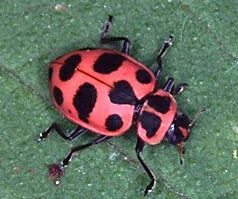
Spotted Lady Beetle, Coleomegilla maculata
(length 6 mm.)
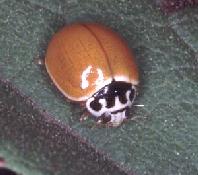
Polished Lady Beetle, Cycloneda munda
(length 5 mm.)
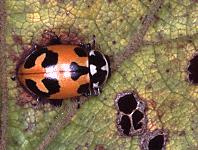
Parenthesis Lady Beetle, Hippodamia parenthesis
(length 5 mm.)
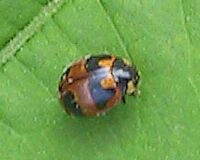
Hieroglyphic Lady Beetle, Coccinella hieroglyphica
(length 4 mm.)
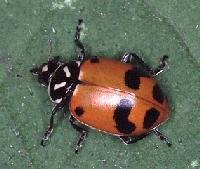
Confused Convergent (Glacial) Lady Beetle, Hippodamia glacialis
(length 7 mm.)
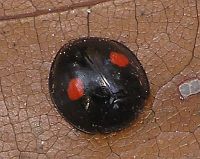
Twice Stabbed Lady Beetle, Chilocorus stigma
(length 4-5 mm.)
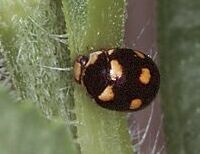
Brachiacantha lady beetle, probably Brachiacantha ursina
(length 3 mm.)
Photographs © P.D. Pratt, Tom Preney
